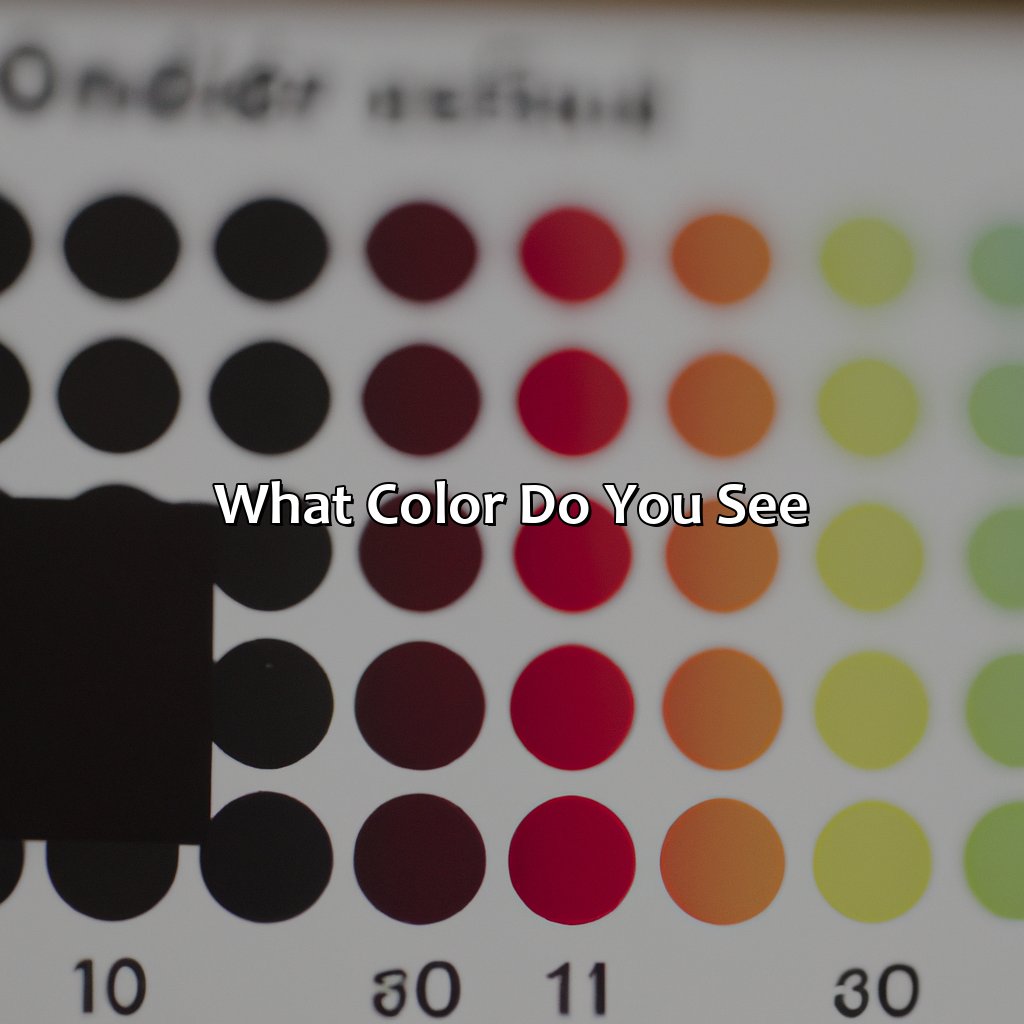Key Takeaway:
- Color perception is a complex process involving the eye and brain. Understanding color science can help us better appreciate the world around us, and can also help us diagnose and cope with color vision deficiencies.
- There are several types of colorblindness, including deuteranomaly, protanomaly, tritanomaly, and achromatopsia. These conditions can be diagnosed through various tests, and individuals with color vision deficiencies can find coping mechanisms such as color correction glasses and alternative career options.
- Our perception of color is influenced by cultural associations and symbolism. By embracing diversity in color perception and creating inclusive environments, we can promote understanding and appreciation for different perspectives on color.
The Science of Color Perception
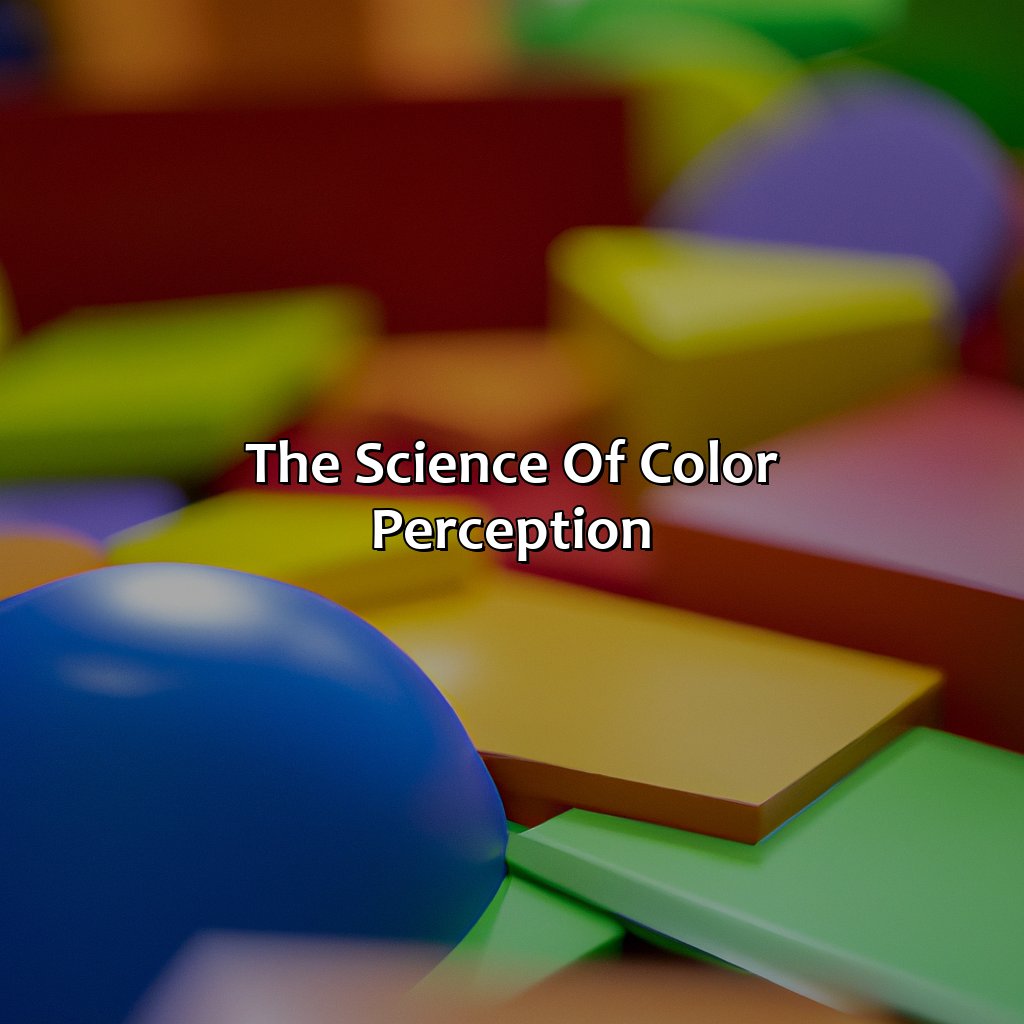
Photo Credits: colorscombo.com by Raymond Gonzalez
We’ll delve deep into the science behind color perception! Visual cognition is our focus. We’ll explore the anatomy of the eye and how the brain processes color info. Plus, we’ll look into how genetics influence our color sensitivity. These sub-sections offer insight into how color science functions. It also looks into the role of the brain and genes on color perception.
How the Eye Works
The complex system of the human eye allows for visual perception and color sensitivity, starting with light passing through the cornea and lens and focused onto the retina. Rods and cones in the retina then convert that light into electrical signals that are sent to the brain via the optic nerve. The retina has three types of cones, each sensitive to different parts of the color spectrum: red, green, and blue. The brain processes this information to produce our perception of color.
While this process is crucial for those with normal vision, individuals with color vision deficiencies have variations in their cones’ sensitivity to specific wavelengths, causing difficulties distinguishing between certain colors. This can range from a mild shift in color perception to complete color blindness. It’s important to diagnose these deficiencies early on as they may impact daily life activities such as driving or reading charts.
To cope with these challenges, individuals can utilize various options such as color correction glasses or digital accessibility features. Additionally, creating inclusive environments for those with color blindness is key in promoting diversity and inclusion.
Overall, understanding how the eye works is essential in identifying and addressing variations in visual perception. Regular eye exams can ensure timely diagnoses that allow individuals to carry out their daily activities without hindrance while embracing diversity in all forms.
Your brain may be responsible for your love of all things pink, but if you’re colorblind, it may also be the reason you can’t tell the difference between red and green.
The Role of the Brain
Visual cognition and color perception are undeniably connected as they work hand-in-hand to form our perception of the world. The brain plays a crucial role in this process by decoding the information received from the eyes and creating an image that can be understood.
Neurological disorders affecting color vision often occur when the brain misinterprets this information, leading to poor or limited color perception. For example, in red-green colorblindness, the brain cannot distinguish between red and green hues due to a dysfunction in the cone cells responsible for processing these colors.
Interestingly, research has also shown that our individual experiences and environments can shape how our brains perceive color. This concept is known as neuroplasticity and highlights the incredible adaptability of our brains.
In fact, it wasn’t until relatively recently that scientists began understanding the specific areas of the brain responsible for color processing. Through advancements such as fMRI imaging, we’ve now been able to gain a greater understanding of how visual information is processed within these networks.
As we continue to delve further into the intricacies of visual cognition and color perception, it’s clear that there’s still much to be learned about how our brains make sense of what we see. However, with ongoing research in this field, we hope to gain a better understanding of not only neurological disorders but also how individual differences contribute to our diverse perceptions of color.
Why blame your parents for your lack of fashion sense when you can blame them for your colorblindness instead? Genetics plays a big role in how we perceive color!
Genetics and Color Perception
It is a widely accepted fact that color perception relies heavily on visual perception and the intricate workings of our eyes. However, genetics may also play a significant role in our ability to perceive colors accurately. Our DNA is responsible for programming the formation of photopigments in our retinas, which in turn can affect how we interpret color wavelengths. Differences in genetics can lead to varying levels of color vision deficiencies: some people may experience mild difficulties distinguishing certain hues, while others may see only in shades of black and white.
Additionally, recent studies have shown that visual perception and genetics work hand-in-hand to influence one another, so it’s important to understand both factors when assessing an individual’s color perception abilities. By combining genetic information with visual testing results, doctors and researchers can gain a more comprehensive understanding of how different people perceive the world around them.
It is important to note that color vision deficiencies can impact not only daily activities but also career paths. For example, certain professions such as pilot or electrician require precise color recognition abilities for safe operation. Individuals who experience color vision difficulties should consult with medical professionals about ways they can adapt or enhance their vision, including specialized glasses or digital accessibility options.
Looks like some people are missing out on the technicolor dreamland we live in with these types of colorblindness.
Types of Colorblindness

Photo Credits: colorscombo.com by Christopher Williams
Grasp the dissimilarity of color vision deficiencies! Check out the different kinds, for example, Deuteranomaly, Protanomaly, Tritanomaly, and Achromatopsia. Each type explains how certain colors appear different or unrecognizable.
Deuteranomaly
Individuals with deuteranomaly experience a type of color vision deficiency. This condition occurs when the green-sensitive cones in the eye are altered or absent. As a result, colors that contain green appear more muted and difficult to distinguish. This can make it challenging for individuals with deuteranomaly to differentiate between some shades of red, green and yellow.
Deuteranomaly is a common form of color blindness, affecting approximately 5% of the male population. Though females can inherit this condition, it is less common in women as it is a sex-linked trait that depends on the presence of genes on the X chromosome.
It’s important to note that since typical color vision involves multiple types of cones working together, people with deuteranomaly are not “blind” to color but instead perceive colors differently than those with normal vision.
Pro Tip: Individuals with deuteranomaly can benefit from using special glasses or filters designed to enhance color contrast and increase perception.
Protanomaly turns the world into a red-tinted wonderland…except for those pesky green lights.
Protanomaly
Individuals with protanomaly experience a type of color vision deficiency that affects their ability to distinguish red from green. This occurs due to the lack of a functional red cone pigment in the eye, resulting in reduced sensitivity to long-wavelength light. Protanomaly is an inherited condition and has different levels of severity depending on the degree of defective pigmentation.
Moreover, Individuals with protanomaly often confuse shades of blue and green with gray and find it challenging to differentiate between reds and greens. It can affect everyday tasks like driving and identifying signals. People with this condition may not even be aware that they see colors differently than others.
A unique feature specific to those who have protanomaly is diminished brightness ability – this means that the amount of light entering the eye may need to be increased for some people to see certain colors normally.
In addition, there is no treatment for protanomaly. However, people can use color correction glasses or filters where they fit over regular glasses to enhance the beneficial effects on color perception.
John Dalton was one such individual who had protanopia (a severe form of protanomaly), he is considered a famous chemist who discovered the laws governing chemical combination which led him being known as a pioneer in modern atomic theory.
Don’t trust a tritanomalous person to choose the paint color for your living room.
Tritanomaly
Color vision deficiency can manifest in multiple forms, one of which is known as tritanomaly. Tritanomaly is a reduced sensitivity to the blue end of the light spectrum, resulting in difficulty distinguishing between blue and green hues. This type of color blindness affects approximately 0.01% of people.
Individuals with tritanomaly may experience difficulty identifying colors that are heavily influenced by blue, such as pastels. They may also have a harder time distinguishing shades of blue from green or yellow. Despite these challenges, it’s worth noting that most people with tritanomaly can successfully navigate daily life without major disruptions.
It’s important to note that while tritanomaly can be diagnosed through tests such as the Ishihara Color Test and Farnsworth D-15 Test, individuals experiencing color vision deficiencies should seek out appropriate care from a medical professional for accurate diagnosis and treatment.
To cope with tritanomaly and other types of color vision deficiencies, there are various options available. For example, tinted lenses or filters can aid in increasing color perception for some individuals. Additionally, many digital platforms offer accessibility features including high contrast options and alternative color schemes to make viewing easier for all users.
Overall, embracing diversity in color perception requires awareness and understanding from both individuals and society as a whole. By making small adjustments in our language choices and design practices, we can create more inclusive environments for everyone regardless of their specific form of color vision deficiency.
Looks like achromatopsia is the ultimate black and white movie experience.
Achromatopsia
People with Achromatopsia have a color vision deficiency that results in the absence of color perception. This condition is characterized by the inability to see colors and reduced visual acuity, which can severely impact an individual’s life.
Achromatopsia is also known as complete achromatopsia or rod monochromatism. It affects only around 1 in every 33,000 people globally. Individuals with this condition experience extreme sensitivity to light, nystagmus (involuntary eye movements), and photophobia (intolerance to light).
Unlike other types of color vision deficiencies, achromatopsia appears equally among genders and ethnic groups. There is currently no cure for this disorder, but certain interventions can assist individuals in coping with symptoms.
Fun Fact: According to the National Eye Institute, achromatopsia affects only about 6 out of every 1000 people aged 16-64 years in the United States.
Diagnosing color vision deficiencies may seem like a daunting task, but don’t worry, the Ishihara and Farnsworth tests have got us covered.
Diagnosing Color Vision Deficiencies
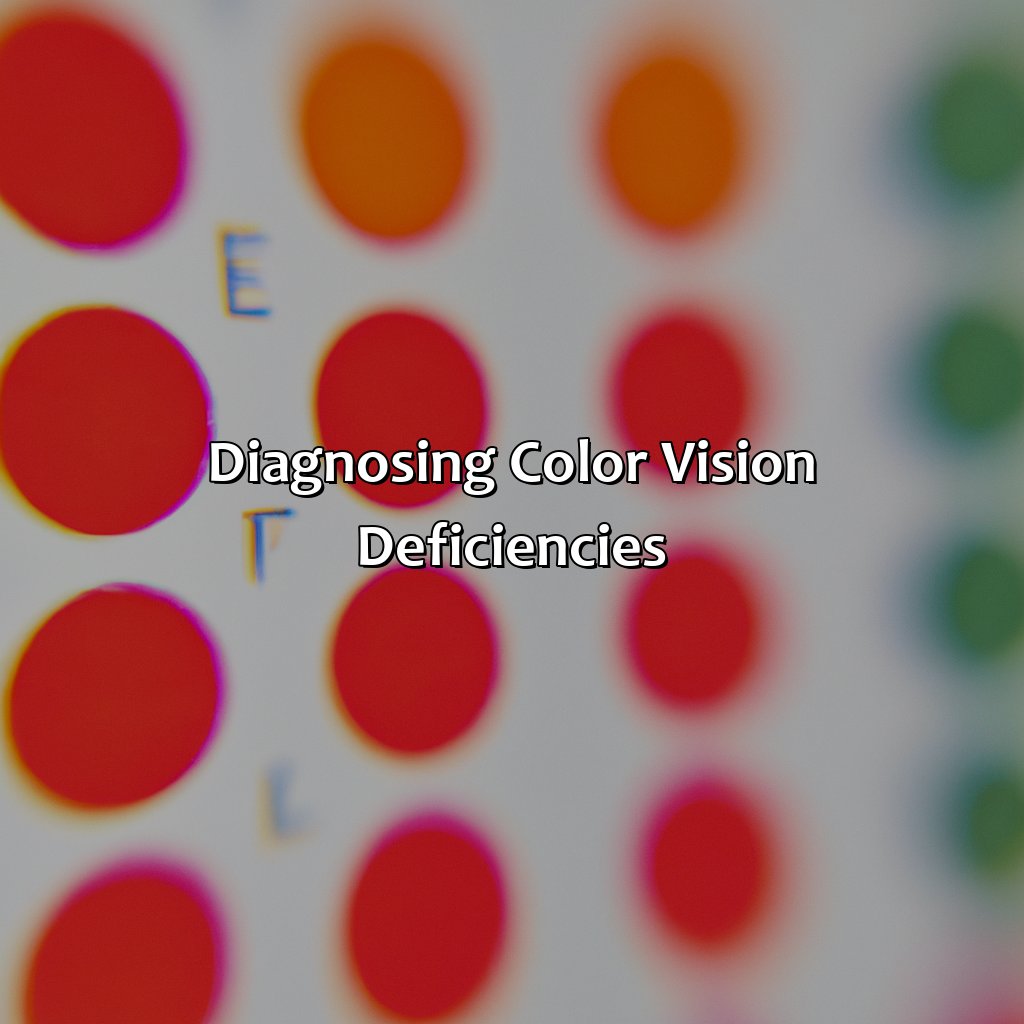
Photo Credits: colorscombo.com by Roger Rivera
To find out if someone has color blindness, three tests can provide insight. These are the Ishihara Color Test, Farnsworth D-15 Test, and Color Arrangement Test. They are easy to use and don’t require a lot of explaining. These tests can help determine the type and severity of the deficiency.
Ishihara Color Test
The color perception test, famously known as the Ishihara test, is used to diagnose color vision deficiencies. See table below for a summary:
| Description | |
| Ishihara Test Purpose | To detect color vision deficiency, commonly known as color blindness. |
| History | The test was invented by Dr. Shinobu Ishihara in 1917 and utilizes colored dots to highlight deficiencies that can affect someone’s ability to differentiate colors accurately. |
| Procedure and Usage | The patient is shown a series of plates with patterns made up of colored dots. Individuals with normal vision will see the numbers or figures in contrasting colors effortlessly, while individuals with color vision deficiency will struggle to see them and perhaps see different shapes or numbers on the same plate. |
It’s worth noting that the Ishihara test varies depending on several factors like age, light intensity, cognitive function, familiarity with symbols and language differences. It may not always correctly identify all types of inherited color blindness. However, its simplicity and low cost make it one of the most popular diagnostic tools.
Pro Tip – While the Ishihara test is a quick way to screen for color perception difficulties, supplementary tests might be needed for more accurate results in professional settings.
If you thought your grandma’s knitting skills were impressive, wait till you see the Farnsworth D-15 test separating colors like a pro.
Farnsworth D-15 Test
The Farnsworth D-15 Test is a color vision deficiency test that measures the ability to distinguish between different shades of color. The test consists of a set of 15 standardized colored discs, which are arranged in a defined order by the patient based on their color perception.
| Test Name | Administered To | Duration |
| Farnsworth D-15 Test | Individuals with suspected or known color vision deficiency | 10-30 minutes |
Interestingly, this test can also detect types of color blindness that may not be detected by other methods. It is commonly used in occupational testing for industries that require accurate color differentiation such as aviation, electronics, and military services.
A popular example of its importance can be found among pilots who need to interpret important lighting signals accurately, regardless of any possible ocular deficiencies. In one instance, an Avianca Flight crashed into the mountainside near Madrid due to a misinterpretation of LED lights signaling the airport runway’s location.
Color vision deficiency is not always obvious and ensuring early diagnoses conducts tests such as Farnsworth D-15 assists in preempting potential challenges at work and everyday life activities.
Think you have an eye for color arrangement? Take the test and find out if your perception is on point or off-color.
Color Arrangement Test
A color arrangement test is a way to diagnose color vision deficiencies by evaluating an individual’s ability to order color swatches. The test consists of a set of colored chips that are to be arranged in a particular sequence, usually according to shades or gradations of colors, such as from lightest to darkest. This test is often used in conjunction with other tests like the Ishihara Color Test or Farnsworth D-15 Test.
| Column 1 | Column 2 | |
|---|---|---|
| Purpose | Diagnosis of Color Vision Deficiencies | To evaluate the ability to order a series of colors |
| Evaluation | Successive matching and ranking | Sorted by Assembled Colors |
| Criteria | Accurate sorting according to shades | Consistency, accuracy, and speed |
Individuals with abnormalities in their color vision may struggle with the color arrangement test. They may have difficulty distinguishing between similar-looking colors or grouping them properly based on shade. This test can be helpful in identifying people who might benefit from alternative career options or accessibility features on certain digital platforms.
Interestingly, research has shown that individuals from different cultures may have varying abilities when it comes to arranging colors. Cultural differences in perception and categorization can impact how someone performs on this test.
Fact: In Japan, researchers discovered that participants arranged orange-colored stimuli differently than Western participants due to cultural associations and preferences (Journal of Vision).
Seeing the world differently doesn’t have to be a bad thing – with color correction glasses and digital accessibility features, coping with color vision deficiencies just got a whole lot easier.
Coping with Color Vision Deficiencies
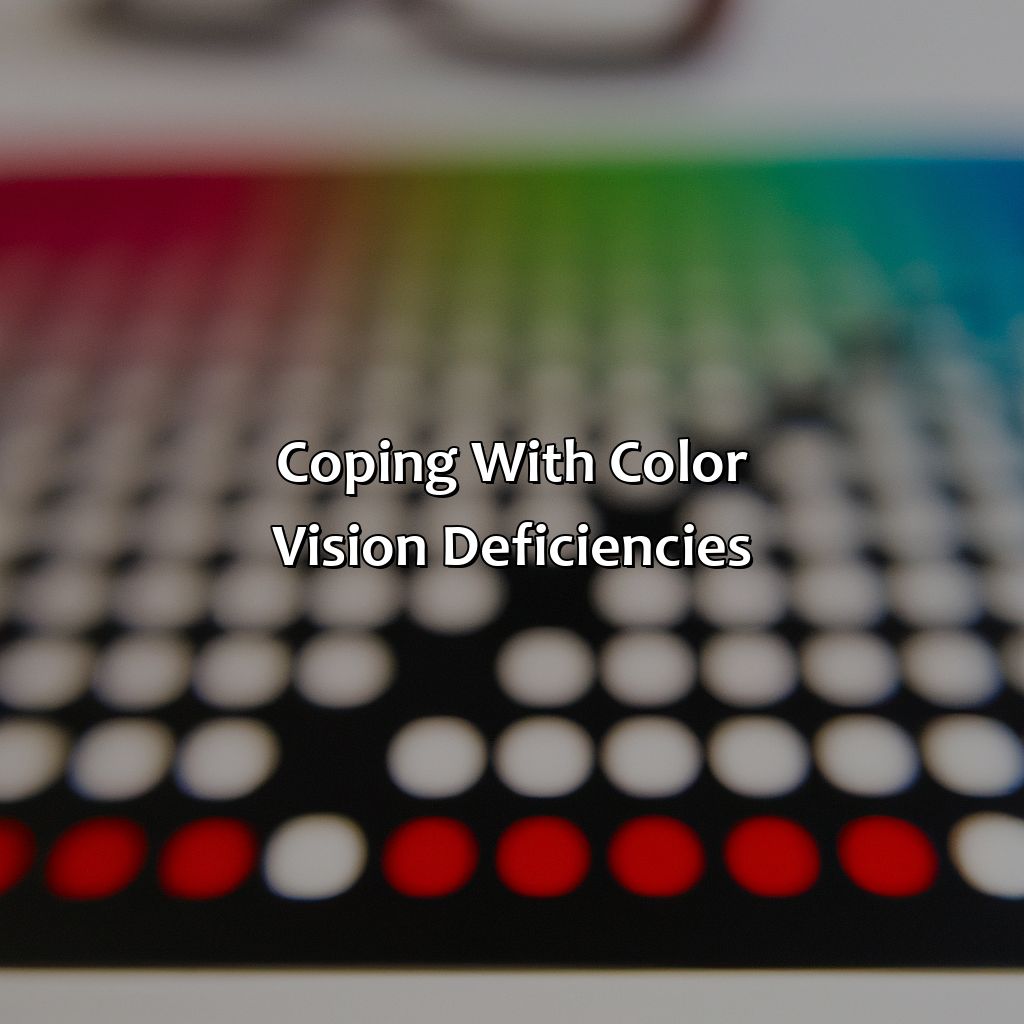
Photo Credits: colorscombo.com by Jerry Jones
For those with color vision deficiencies, there are many ways to cope. Color correction glasses can improve visual impairment. Digital platforms also have accessibility features. Additionally, there are alternative career paths available.
Color Correction Glasses
Color correction lenses are specialized eyewear designed to improve the perception of colors for individuals with visual impairment. These glasses work by selectively filtering out specific wavelengths of light to enhance color discrimination and improve overall color vision. This type of eyewear can be particularly helpful for people with color blindness, enabling them to see a wider range of hues.
Color correction glasses use advanced optical technology and a range of filters to adjust light wavelengths in real-time, providing users with better clarity and definition in their visual perception. The glasses can also help protect eyes from harsh sunlight, making it easier for individuals with visual impairments to enjoy outdoor activities.
For individuals who are significantly impacted by color blindness or other forms of visual impairment, wearing color correction glasses can be life-changing. With improved color vision, these individuals may feel more confident interacting with the world around them and participating in everyday activities without concerns about misperceiving colors.
If you are considering getting color correction glasses or know someone who could benefit from this type of eyewear, it is important to speak with an eye care professional to determine the right solution for your needs. Practicing good eye health habits and seeking regular eye exams can help detect changes in visual function and identify any underlying conditions that might impact your ability to see colors accurately.
Even if you can’t see all the colors, digital platforms have got you covered with accessibility features.
Accessibility Features on Digital Platforms
Modern operating systems and web browsers have built-in accessibility tools that can adjust the contrast, hue, brightness, and saturation of digital content. Many mobile apps now offer in-app color corrections and features specifically designed for color-blind users. Larger text sizes and high-contrast themes can also make digital platforms more accessible for those with visual impairments or dyslexia.
Furthermore, online communities are actively contributing towards developing new accessibility solutions to help individuals overcome their unique vision challenges. They’re consistently introducing novel technologies that provide users with greater autonomy over customizing and altering digital experiences according to their needs.
One true story is about Molly Burke, a motivational speaker who uses YouTube to promote inclusion and diversity for individuals with visual impairment. She heavily relies on using various features available on YouTube that allows her to alter the video’s contrast ratio settings, subtitles, screen reader support as well as even going as far as bringing in extra illumination which helps her see much better while recording or editing videos. These features have allowed her to continue promoting diversity and leading a normal life while not letting her visual disabilities hinder her progress.
Just because you can’t be a pilot or a police officer doesn’t mean you can’t have a colorful career.
Alternative Career Options
Individuals with color vision deficiency may encounter challenges in certain careers, such as those that involve the use of color-coded systems or require accurate identification of various hues. However, there are alternative careers available that do not rely heavily on color perception. Examples include copywriting, data analysis, coding, and project management. By exploring these alternative career options, individuals with color vision deficiency can still flourish professionally without being limited by their condition.
It is important to note that certain careers may impose specific requirements based on job functions. For example, pilots or electricians require normal color vision due to safety concerns. Therefore, it is crucial for individuals with color vision deficiency to research the requirements of potential careers before pursuing them.
Pro Tip: Consider seeking guidance from vocational rehabilitation specialists or career counselors who can provide valuable insights and resources for finding compatible alternative careers.
Who says seeing the world in a different color is a bad thing? Embrace diversity in color perception and celebrate the unique ways we all see the rainbow.
Embracing Diversity in Color Perception
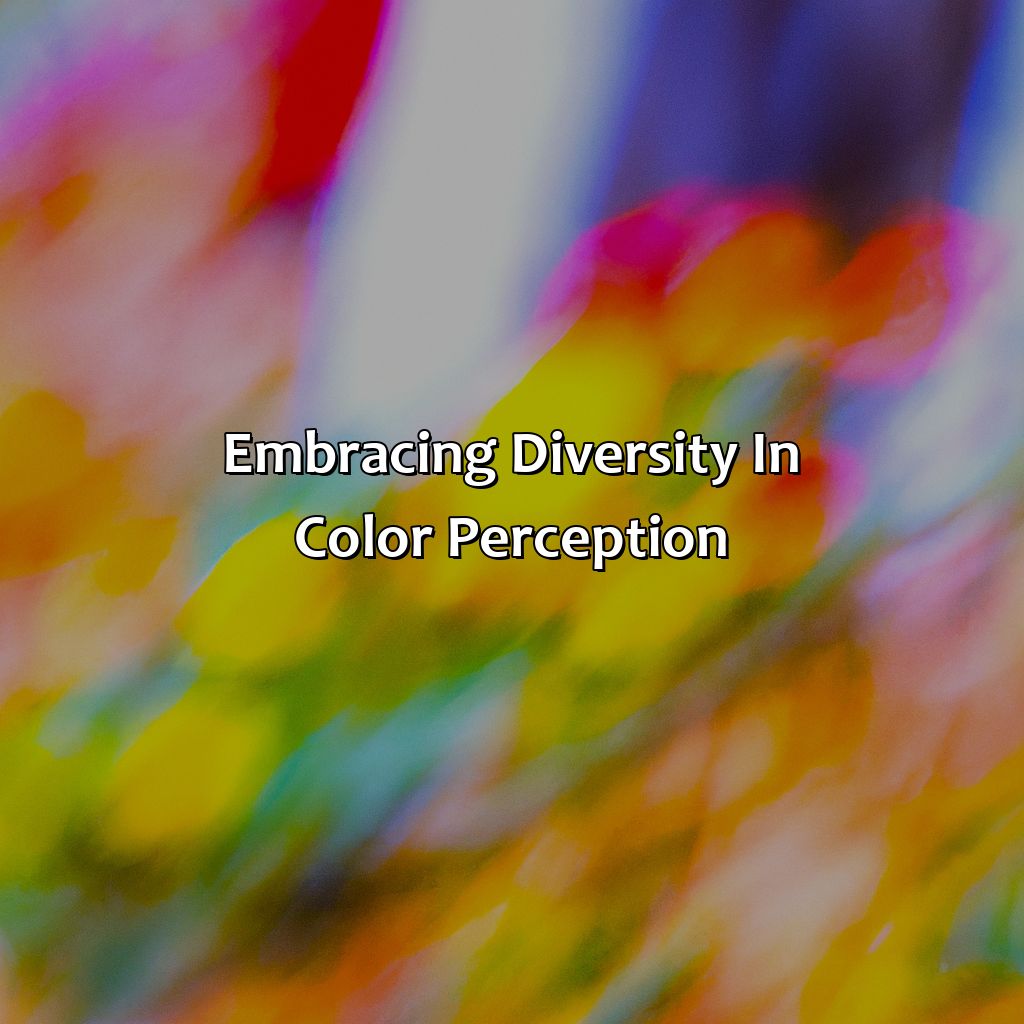
Photo Credits: colorscombo.com by Bruce Taylor
Head to the “Embracing Diversity in Color Perception” section! It has two sub-sections.
- The first one is “Cultural Differences in Color Perception”. This looks at the varying meanings, symbols and connections associated with colors in different cultures, languages and areas.
- The second sub-section is “Creating Inclusive Environments”. Here you can learn about color blindness and strategies that can help create environments that acknowledge diversity in color perception.
Cultural Differences in Color Perception
Different cultures have different associations with colors. Language and color have a strong relationship as each language has its own perception of color meaning. Color symbolism is prominent in various artistic forms, including literature, music, art, movies, fashion advertising, branding and marketing, graphic design, web design, and architecture. Even nature has its own color symbolism.
To further explain the cultural differences in color perception, a table can be created to showcase examples of color symbolism across various aspects of culture.
| Cultural aspect | Examples of Color Symbolism |
|---|---|
| Literature | Red symbolizes passion and love in Western literature while it represents mourning in South Africa |
| Music | Green is often associated with nature but also represents jealousy in some cultures |
| Fashion | White is the traditional wedding gown color in Western countries while it’s symbolic of mourning in other cultures |
| Advertising & Marketing | Yellow is recommended for food packaging as it stimulates appetite but it represents danger or evil spirits in some Asian cultures |
| Interior Design & Architecture | Blue is often used to create a calming atmosphere but it represents sadness and mourning in some cultures |
Unique details on this topic include the concept that every culture has their own unique interpretation of colors. For instance, red symbolizes luck and happiness during traditional Chinese festivities yet it symbolizes danger or communism negativity to other cultures.
In ancient Egypt, green was considered a sacred hue since they believed the soul transformed into a green form after death. Additionally, specific colors are significant to certain traditions and ceremonies like black garb at funerals.
One true history related to culture and color associations came from Japan where 45 shades were recognized prior to the introduction of Western influences on using primary colors. The Japanese holds great significance with their color schemes; blue indicates youthfulness or new beginnings while white stands for purity or mourning depending on contextual usage.
Colorblindness: when your world becomes a black and white movie with no artistic merit.
Social Implications of Colorblindness
Colorblindness has social implications that go beyond the aesthetic appreciation of colorful objects. The inability to distinguish red and green can affect a colorblind individual’s daily activities, including career choices, transportation, and safety. Inclusivity in design is crucial to ensure that colorblind individuals are not left out in making important decisions.
Accessibility features that cater to color vision deficiencies should be incorporated into physical environments and digital platforms. Lack of inclusivity reinforces the idea of “ableism” and alienates people with visual disability. Collaborating with experts in the field of accessibility feature design is necessary to create an inclusive environment for everyone.
In history, communities like indigenous people who have distinctive perceptual expertise have been disregarded or considered inferior by Western societies due to their differential perception caused by cultural adaptation and genetic evolution. Color blindness thus is not a deficiency but an added potential for diversity in human perception across populations!
Creating Inclusive Environments
A welcoming environment can be created by considering diversity in color perception. It is crucial to make necessary changes and alterations that accommodate color-deficient individuals, without disrupting the general population. Several options for visualizing graphics accommodate for those with limited color perception. These solutions include hue-rotation tools and high contrast visualization. Creating awareness about this issue is an important facet of creating inclusive environments.
In addition, training and educating employees on how to interact with customers or colleagues who have color vision deficiencies must be considered. Furthermore, providing access to software that assists those with disabilities in visual comprehension can also help create a more inclusive work environment. This may include OCR (optical character recognition) software that allows users to convert printed documents into audio guides.
One way of embracing diversity is hiring people with diverse abilities, including those with color perception deficiencies. Focusing on building a team that has important qualities like leadership and effective communication should lead to better work outcomes while promoting inclusivity in the workplace.
Overall, building an inclusive environment means providing equal employment opportunities regardless of differences in sensory ability. A company may have diverse individuals grouped together but should create solutions catering to all employing people with different sensory abilities or providing assistance devices.
Five Facts About “What Color Do You See”:
- ✅ Different people may see colors differently due to variations in color perception. (Source: Live Science)
- ✅ The colors we see are determined by the wavelengths of light that reach our eyes and are interpreted by the brain. (Source: Scientific American)
- ✅ There are three types of color receptors in the human eye, each sensitive to different wavelengths of light. (Source: National Eye Institute)
- ✅ Some animals can see colors humans cannot, such as ultraviolet light. (Source: National Geographic)
- ✅ The concept of color perception has been studied for centuries, with notable contributions from Isaac Newton and Johann Wolfgang von Goethe. (Source: Encyclopedia Britannica)
FAQs about What Color Do You See
What color do you see?
As an AI language model, I do not see colors in the same way as humans do. I understand and recognize color names, but I don’t have the ability to physically perceive colors.
Why do people see colors differently?
People may see colors differently due to variations in their eyes’ sensitivity to specific wavelengths of light. Additionally, individual differences in color perception can also be influenced by factors such as age, gender, and genetics.
What is color blindness?
Color blindness is a condition that affects a person’s ability to distinguish between different colors. It’s usually caused by a genetic defect that affects the way the eyes perceive light, and it’s more common in males than females.
Can color affect your mood?
Yes, color can definitely affect your mood. Certain colors have been shown to have a calming effect, while others can be energizing or even create feelings of aggression. For example, blue is often associated with calmness, while red is often associated with excitement.
What is the color spectrum?
The color spectrum is the range of colors that humans can perceive. It’s usually divided into seven main colors: red, orange, yellow, green, blue, indigo, and violet. These colors appear in a specific order when light is refracted, which is known as a rainbow.
How do you mix colors to create new ones?
The process of mixing colors to create new ones is known as color mixing. When you mix two primary colors (red, yellow, or blue) together, you get a secondary color (orange, green, or purple). By mixing secondary colors together, you can create tertiary colors (red-orange, yellow-green, and blue-purple).
